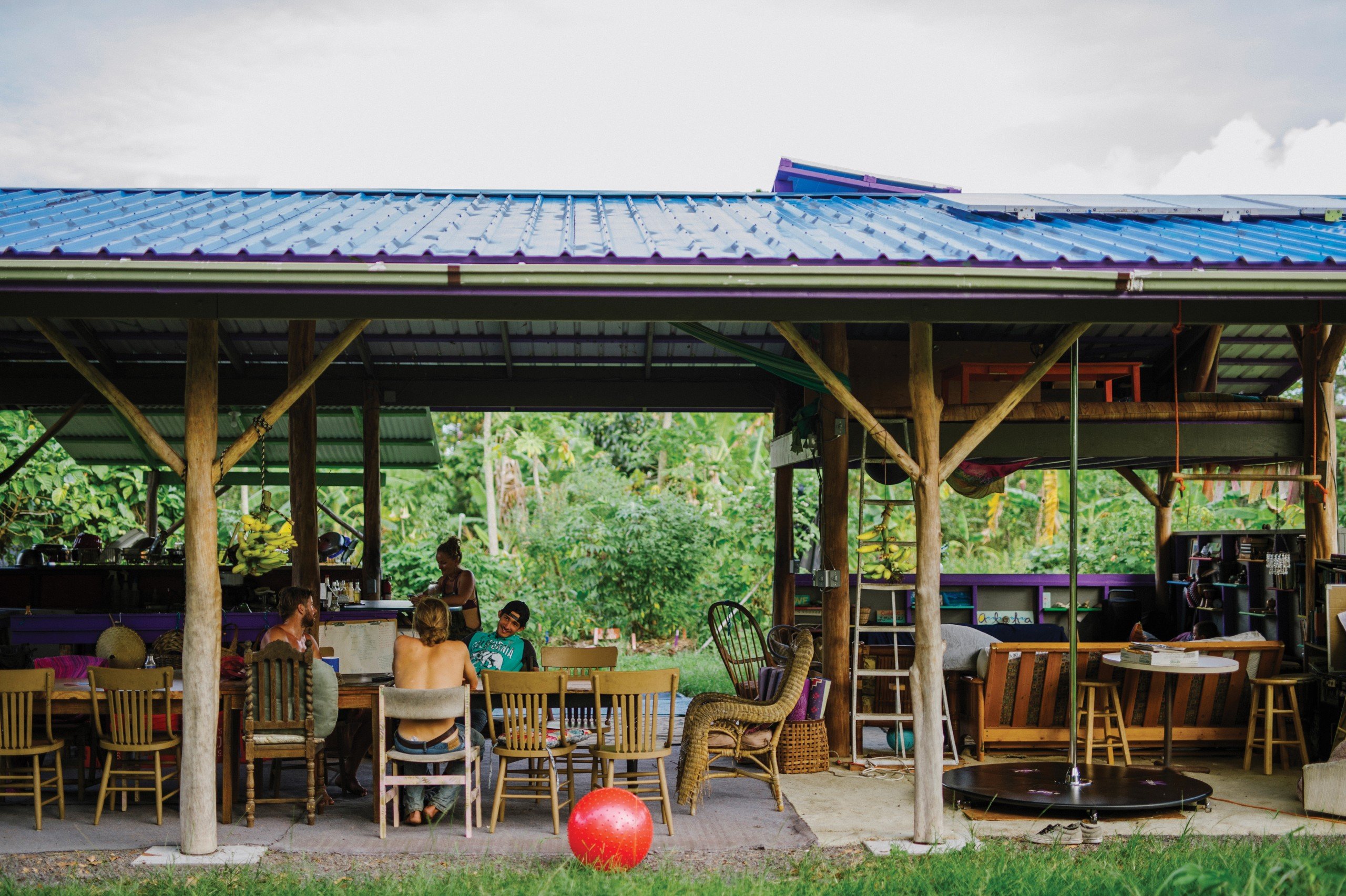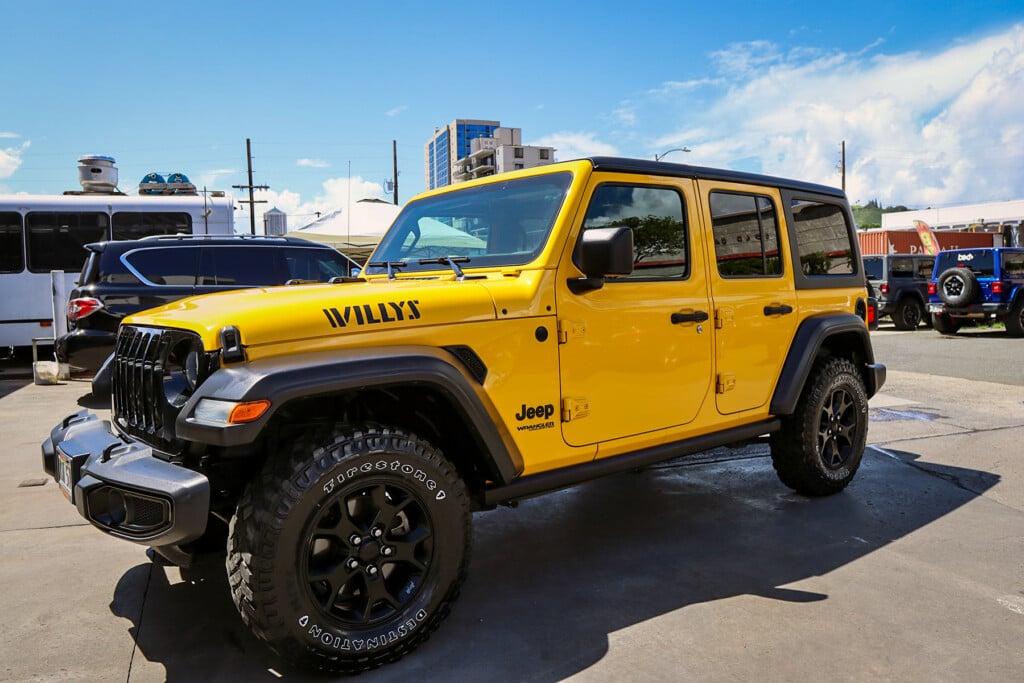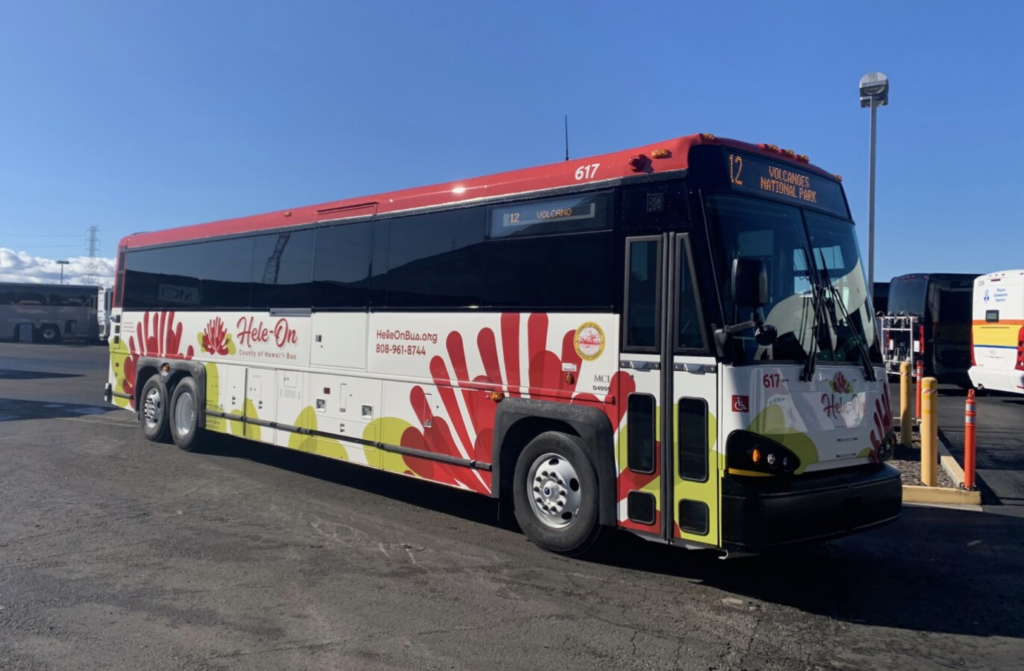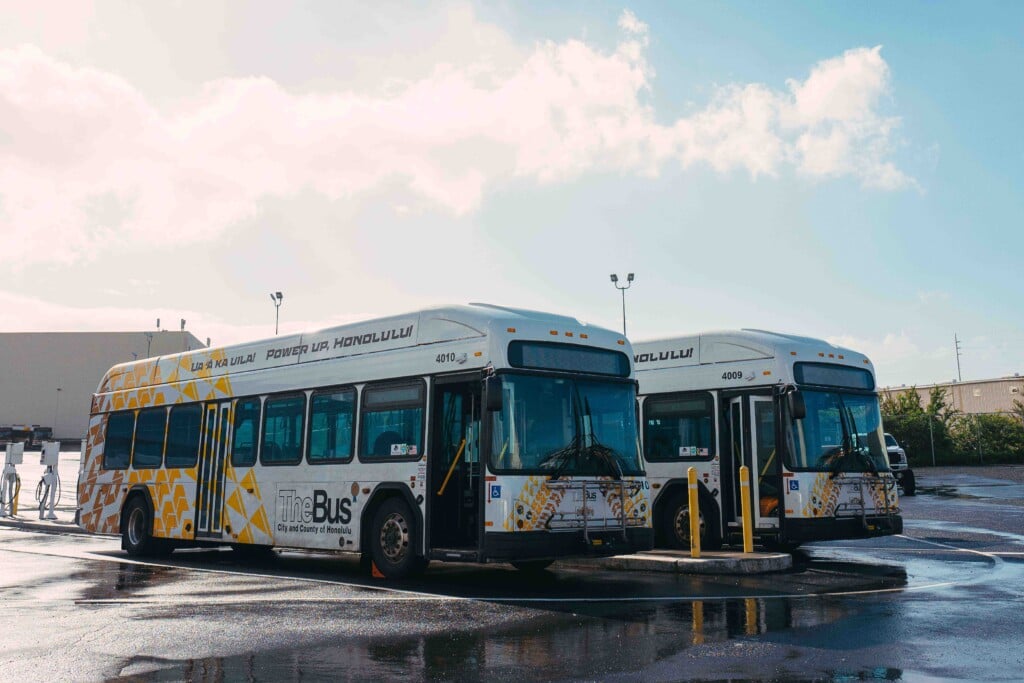Off the Grid on Hawai‘i Island
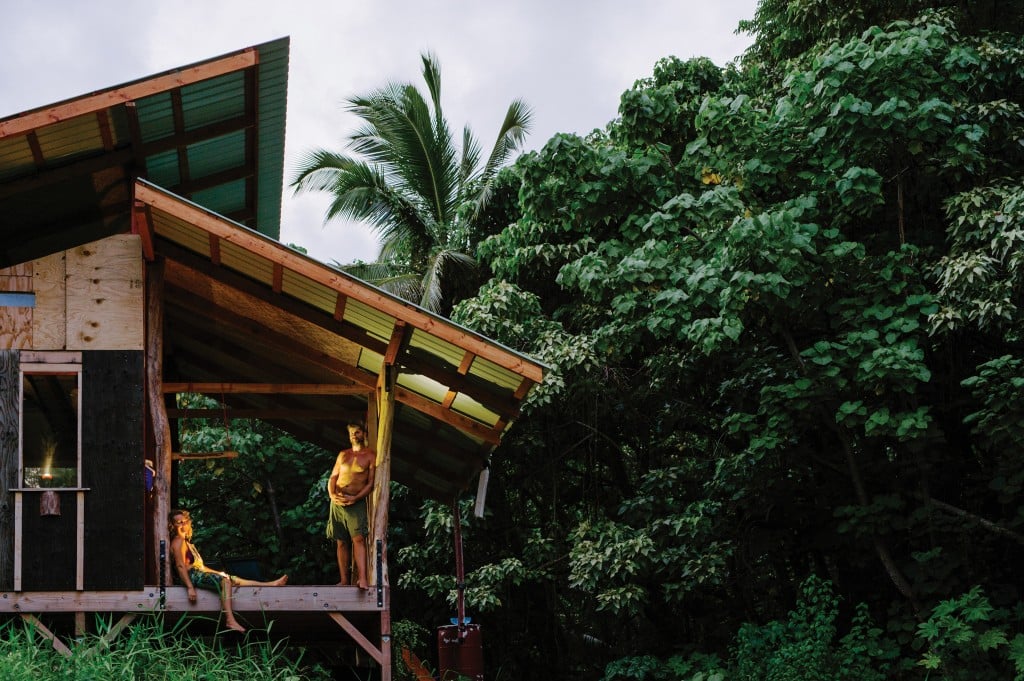
Four homes that are off the grid on Hawaii Island show the range of possible lifestyles from affluent living to nothing but the basics.
When you imagine living off the grid, what comes to mind?
How about a community that grows and hunts all of its food, composts its waste and relies entirely on rainwater for bathing and drinking? Or how about a state-of-the-art home fully equipped with modern appliances powered entirely by clean, renewable energy?
Regardless of the form, off-grid lifestyles are becoming increasingly popular as people unplug from public utility companies to lower costs, convert to clean energy sources and live self-sufficiently. According to a forecast by Accenture, 12 percent of American households will be off grid by 2035.
“For me personally, living off grid gives you the peace of mind, control and pride that you’re taking care of yourself. If something happens to the main grid, you’ll be self-sustaining and safe from outside catastrophes,” says Wayde Fishman, an excursions guide; host of the podcast, “Lucky We Live Hawaii”; and author of the book, “Off Grid in Hawaii: Living a Sustainable Lifestyle.”
Although unplugging from public utilities isn’t practical everywhere, the mild temperatures; abundance of sunshine, wind and rain; and fertile soil make Hawaii an attractive place to go off grid. And in some remote areas of Hawaii Island, residents have no choice but to capture their own energy and water.
We asked some of Hawaii Island’s most intrepid and resourceful off-gridders: What motivated you to unplug, and what lifestyle have you created?
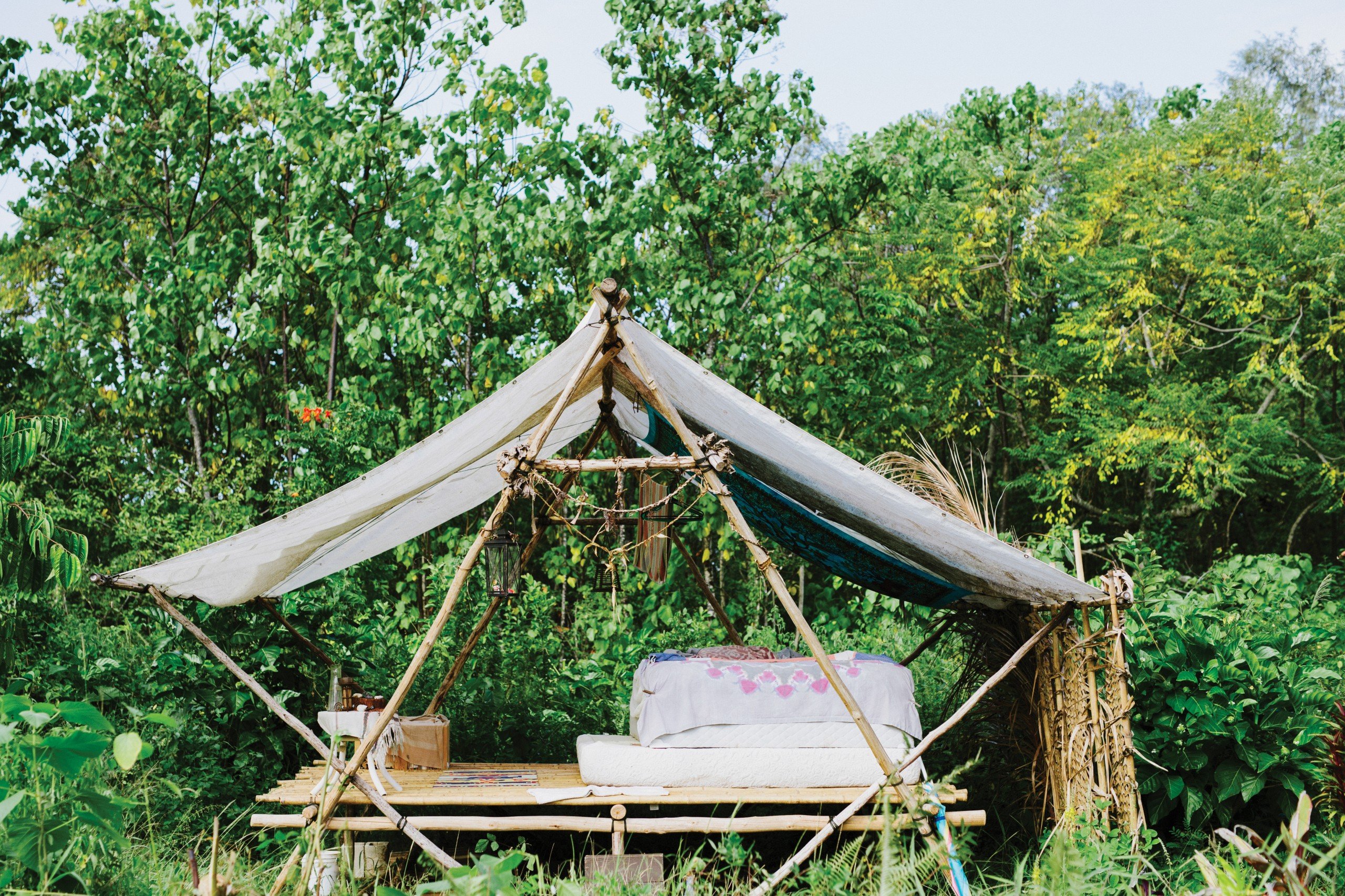
The Community Builder
At Galen’s farm in the Puna region of Hawaii Island, about a dozen people have gathered for lunch under a simple, wall-less structure that serves as kitchen, dining room and living room. The diverse group of hippies, backpacker types, young families and local teenagers are sharing a hearty meal of taro, yams, leafy greens, wild boar and fruit.
“We grow nearly all of our own food here and we hunt and fish,” Galen says. “And every day we come together for a communally cooked meal. This is the glue that keeps us together,” says Galen, who like several others quoted in this story, asked that his full name not be used to protect his privacy.
For the inhabitants, this is not just a farm. It’s a community of people who agree to live in a more intentional way, free of many of the comforts and services that define typical urban and suburban living.
“We’re not tied into the established network of power, water and sewage that our society has given to us,” Galen explains. Bathing and drinking water comes from rain collected on rooftops and stored in catchment tanks. The off-gridders run their appliances and lights from the energy created by solar panels, using batteries to store power for use when the sun isn’t out. Instead of flushing away waste, they built composting toilets, which provide nourishment for their fruit trees. And whenever they can, they find natural substitutes for typical products, such as tree leaves in place of toilet paper.
“We all want to take care of this land and one another, and have this land take care of us. It can seem laborious to live this lifestyle if you’re alone, but when you have a lot of people around with the same idea, it becomes more effortless and carefree,” says Galen.
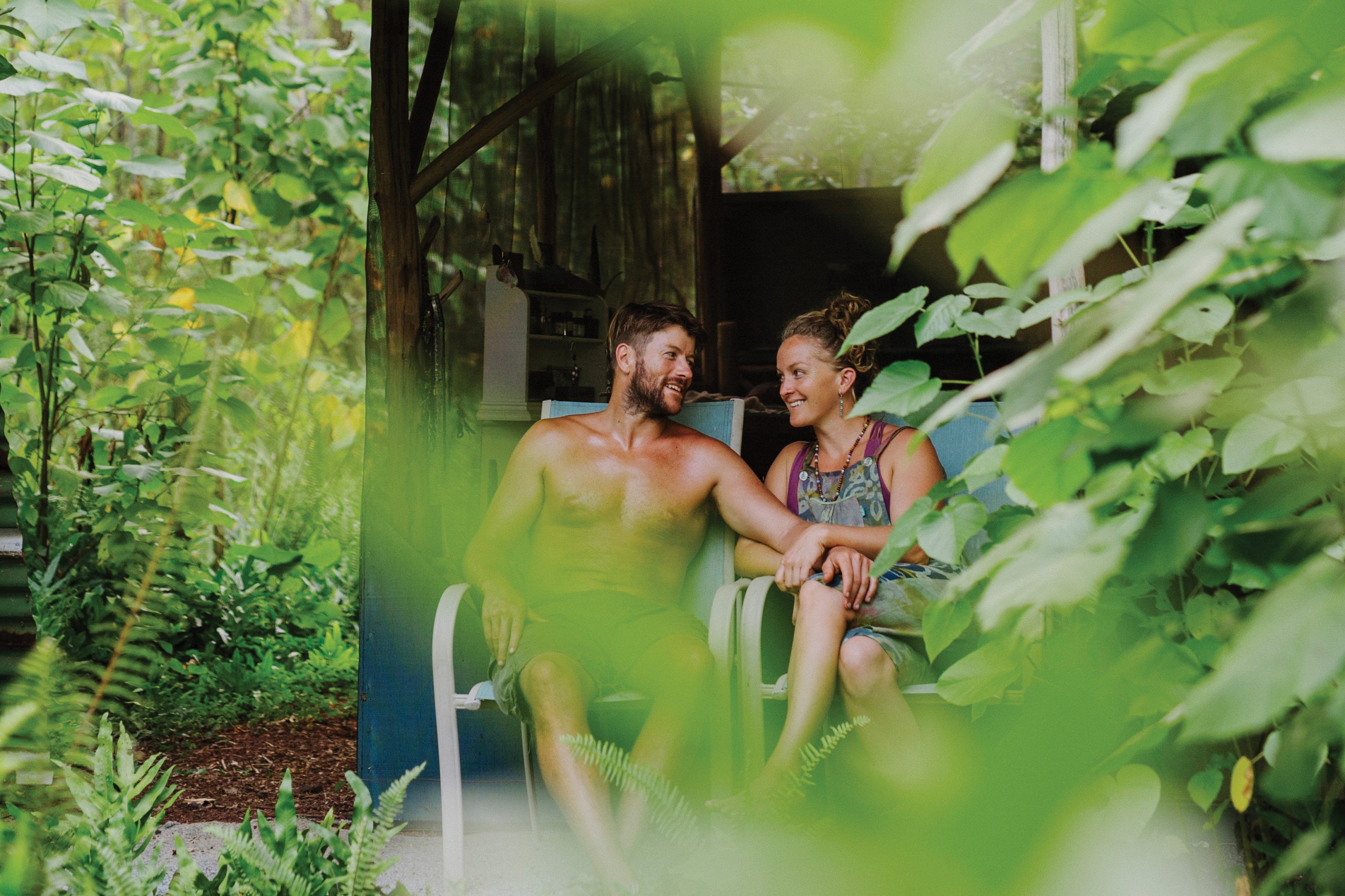
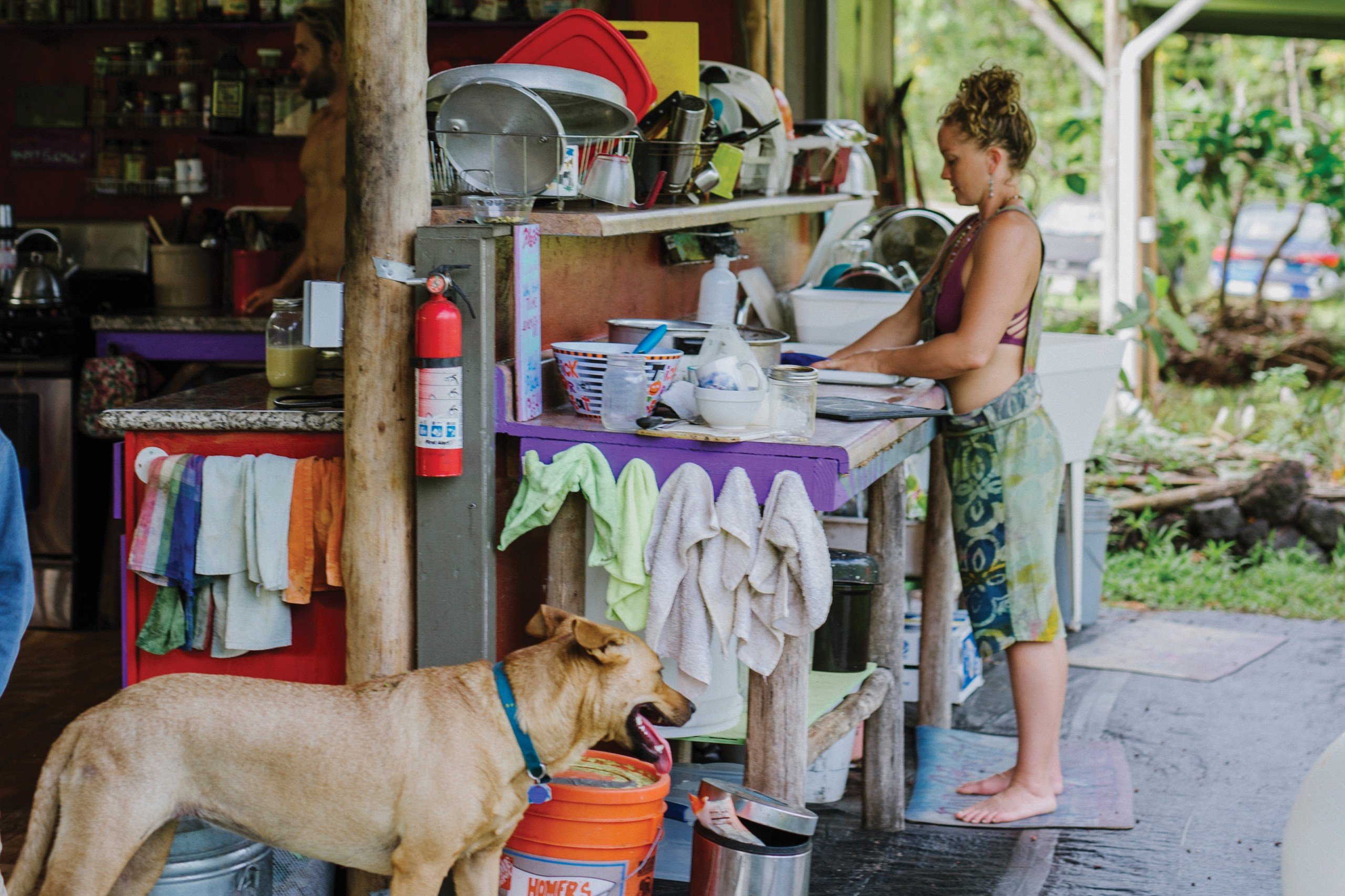
Partners Galen and Mary live off the grid with other people in an isolated part of Puna, unconnected to the electric grid or a water and sewer system. “We grow nearly all of our own food here and we hunt and fish,” Galen says. “It can seem laborious to live this lifestyle if you’re alone, but when you have a lot of people around with the same idea, it becomes more effortless and carefree.”
A big part of the off-gridders’ philosophy, he says, is to be mindful of how they use the power they generate. While he could have installed a larger solar power system, he purposefully kept it minimal. This means everyone must monitor and restrict their usage, only running appliances and charging iPhones when the sun is out, turning lights off at night and, ultimately, accepting there will be times when they don’t have power.
“We’re choosing to live in a place that’s dark at night, away from the distractions of what electricity brings,” Galen says. He admits this can be a shock for people new to the community. “When some people first come out here they are like, ‘oh my god, I can only charge my computer when it’s the middle of the day when the sun is out?’”
He points out, however, that even though they choose to live minimally, it does not mean their lifestyle is inexpensive. The catchment water system, which includes tanks big enough to store two months of water, UV filters and plumbing systems, cost $8,000. The used solar panels were given to him for free, but the other parts of the system, including storage batteries and wiring, cost about $3,000. That doesn’t include maintenance and replacement costs.
“As the person paying for the development of this land, I’m certainly not saving any money living off the grid,” he says.
While Galen gets numerous inquiries about joining his community, he says most people are surprised when they find out how much work it entails. “For example, people think gardening is just harvesting the food. They don’t realize it’s only 1 percent of what you have to do. You also have to make the garden beds and the soil, propagate your plants, mulch it and constantly weed. There are so many steps before you can actually eat the food.”
He encourages people interested in such lifestyles to understand that getting back to a more natural way of living doesn’t mean doing less.
“If it’s something you saw on the internet, but you never did physical labor before, you have to realize it takes a lot of work to live this life. You’ve got to love sweating in the middle of the day and have it be something you thrive on.”
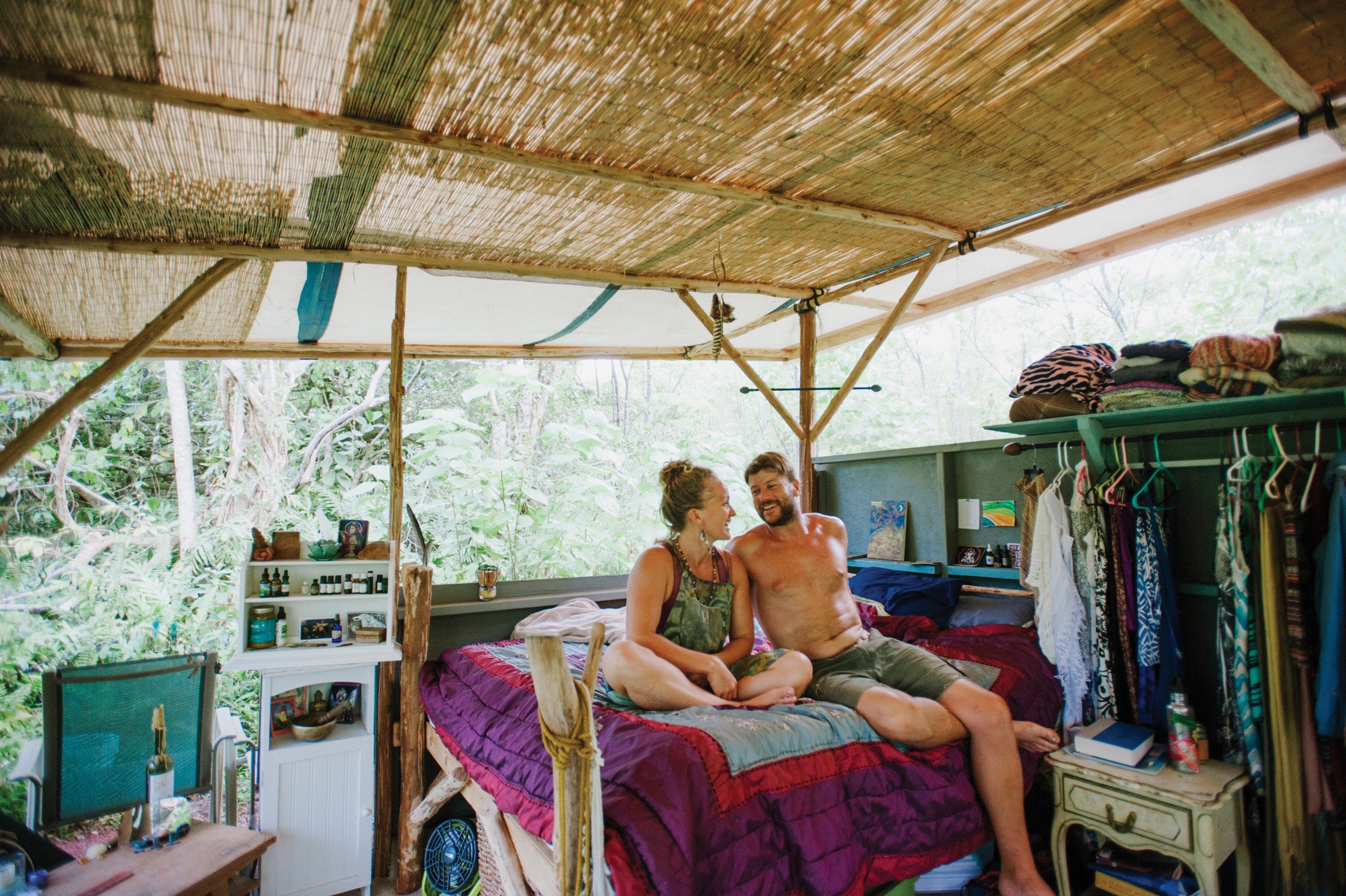
The gathering place for Galen and Mary’s ohana is the combined open-air kitchen, dining room and living room, below. “Every day we come together for a communally cooked meal. This is the glue that keeps us together,” Galen says. Bathing and drinking water are collected in roof-top catchment systems; appliances and lights are powered by solar panels and storage batteries; and composting toilets turn bodily waste in nourishment for fruit trees.
The Adapter
Lisa and her partner, Jordan, like an evening glass of wine on their front lawn, which sits on the edge of the stunning Puna coast. Dolphins and, during the winter, humpback whales, pass so close they can hear the mammals blow when they surface.
But five years ago, they knew close to nothing about how to make this home livable. Even though they had fallen in love with the location and the affordable foreclosure price, the property was in a high-risk lava flow zone with a sparse population. The utility companies would not invest in the area. If they wanted to live there, they had to generate their own energy.
“Coming from middle-class America suburbia, I had zero education in this. So there was a lot of hit and miss,” Lisa says. “Originally we were catching rainwater off of the roof into a garbage can, and we had a bucket that we’d use to pour water down the toilet.
“It took two to three years to get all systems up and running. We did it with guidance from others, but basically we were just bumbling around trying to figure it all out with YouTube. Thank god for YouTube.”
The pair originally hoped to use solar, but the price for panels and storage batteries was too high. Plus, they worried the sea air would quickly corrode the batteries. Instead, they settled on a relatively small Honda generator that cost $900. Their monthly gas bill is about $60 to $90, and every six months they pay $60 for maintenance.
“It’s perfect for what we need it for,” Lisa says. “We don’t use a ton of energy. We have a small refrigerator, some devices and lights, a cell booster and power tools — that’s about it. It’s very minimal.”
The only downside, she says, is that their system can’t power even the most energy efficient washing machine they could find. “It would fill with water and just sit there; it was so frustrating,” she says.
Because of their coastal location, they have also investigated wind generators. But most models sound “like a jet engine landing in your room,” Lisa says. Nonetheless, she is optimistic about a wind turbine currently sold in India, and soon to be sold in the U.S. for $750, which promises to quietly create 3 to 5 kWh per day — enough to power a small home.
For Lisa, off-grid living provides more than financial benefits. It has helped her career as a writer. “I live on an acre, and there are only four to five people living within a mile. That privacy and seclusion and being surrounded by natural beauty and fresh air makes it that I don’t need to go anywhere unless I want to socialize. I’ve written several books here and have two more in the making.”
Learning to live off grid has also given her the peace of mind that she and Jordan can survive any downturn. “If it ever gets intense economically, we have enough food here to feed ourselves and other people,” she says, referring to the coconuts, lilikoi, avocado, mango and ulu they grow on their land, as well as the chickens they could raise and wild boar they could hunt if they needed to.
“It’s just about adapting. We’re all adaptable. If someone isn’t, they better get adaptable,” she says.
Five years ago, Lisa and Jordan were, as they describe, bumbling around; today, they are confident off-gridders. “Now it doesn’t seem like a hassle. We know how long the generator runs on a gallon. We know we have to turn off the refrigerator when we run a power tool so we don’t blow the system. Five years ago it was like learning Swahili. Today, it’s second nature.”
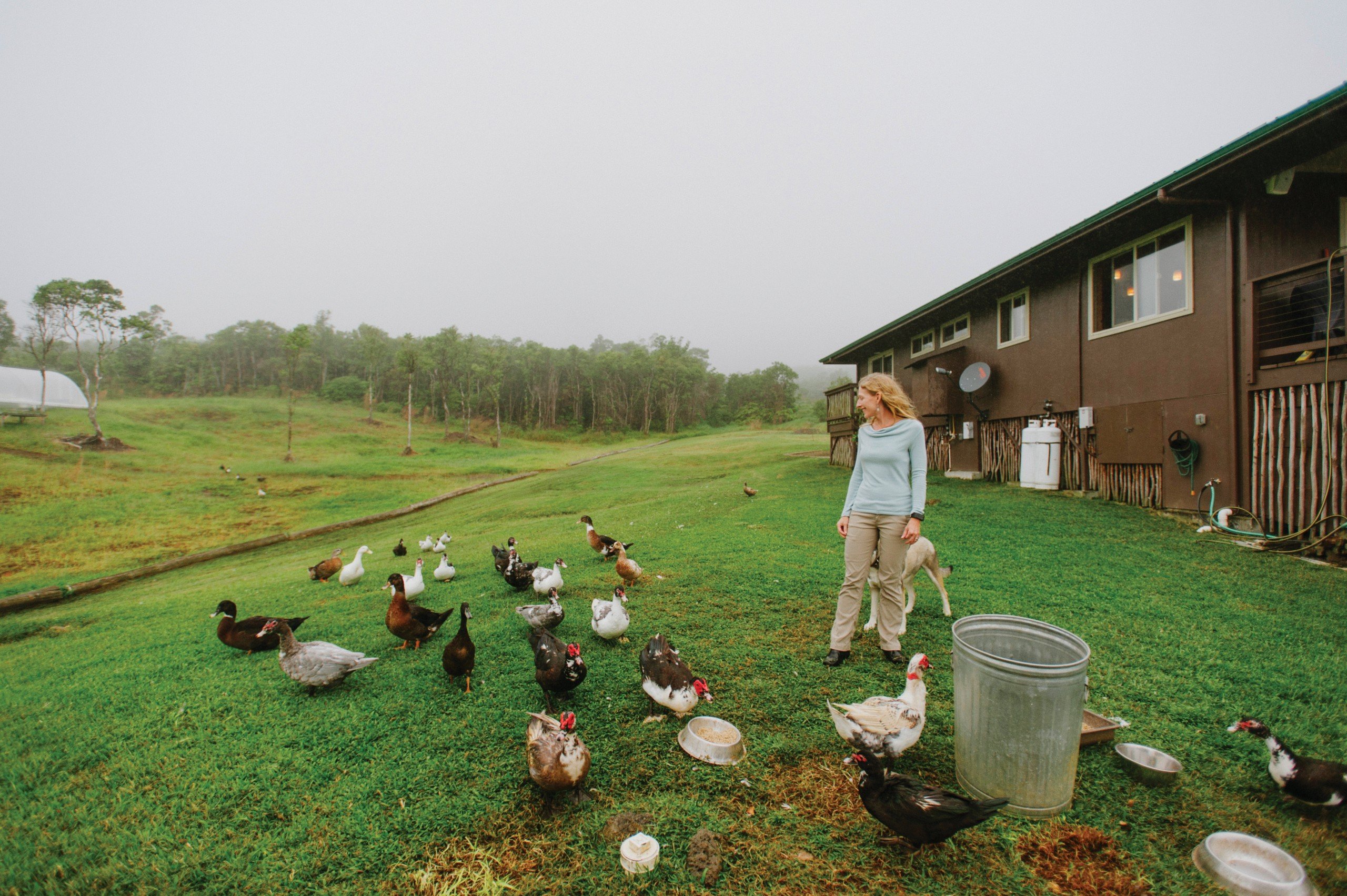
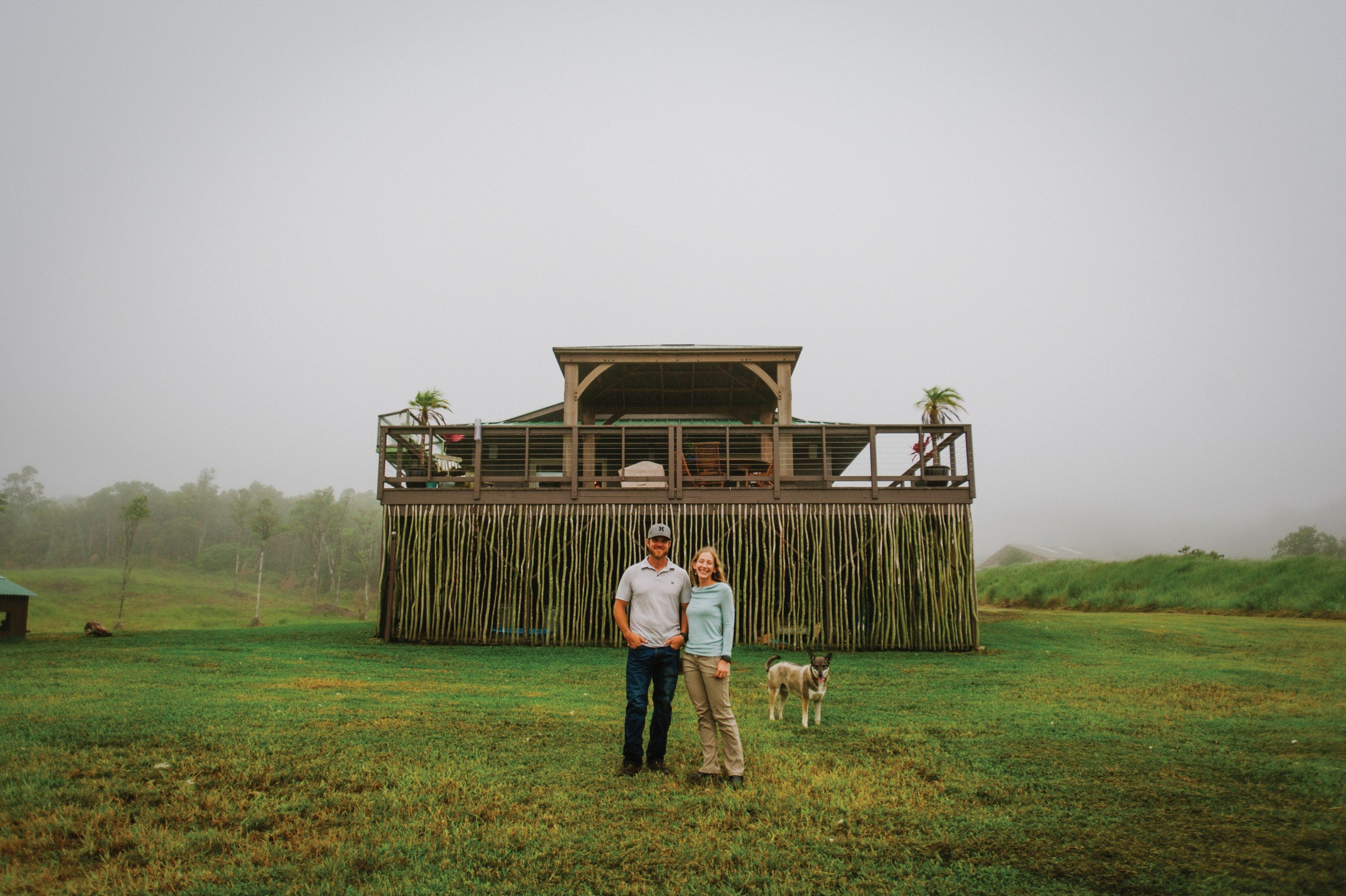
“When it comes to the utility companies, we have no power as consumers to find better products and services. The only way we can do that is drop out of the system they want us to be a part of.”
David, Off-gridder living near the Hamakua Coast
The Monopoly Resister
For David, being off grid is a way to protest what he believes is a rigged system.
“When it comes to electric and water companies, there’s zero competition. They are already supported by our tax dollars. So when we are forced to use them, it’s like we’re paying them twice. When there isn’t fair competition and a fair market, we’re going to overpay. Choosing to go off grid is a way to vote with our wallets,” he says.
The former naval officer is not new to off-grid living. As a child, he lived with his family in rural Mexico, where the nearest gas station was four hours away, and the nearest hospital was 12 hours away.
“After we moved to the U.S., I knew city life wasn’t what I wanted to do long term.” He and his wife, a doctor, saved their money while living on the East Coast and bought land on a secluded mountain near the Hamakua Coast. There, they built not only a house, but also the road leading up to it and the entire water catchment and energy system.
The house feels modern and is equipped with all of the appliances that help make life enjoyable and convenient. First-time visitors are often shocked to learn they live unplugged from the utility companies.
“It’s not like I’m living in a hut,” he says with a laugh. “This works just like any other urban house.”
The math also works. In their previous house, they had been paying about $4,000 a year in utility bills. The current solar power system, which they purchased wholesale and installed themselves, cost $16,000 in total. “After four years, we start to save money,” David says.
While many people who are interested in going off grid are afraid they will have to give up too many of the conveniences they enjoy, David doesn’t feel like they have to make many compromises at all.
Their system creates about 3.2 kilowatts per hour under full sun, and the batteries store 21 kilowatt-hours. Even when it’s rainy, they still make about 1 kilowatt per hour. If they make 5 kilowatts per day, they can live comfortably, running all of their major appliances. Over several years, they have only had one or two instances when their batteries ran so low they had to use a backup generator. Like many others on solar energy, they only run energy hogs like the dryer when the sun is out.
“Most people just don’t understand how easy it is to get your usage down. It just requires a few simple things, such as using an energy efficient refrigerator, or changing your lightbulbs to LED, which only use a seventh of the power of regular bulbs. It’s very easy,” David says.
Switching to DC voltage is also important, he advises. AC is the standard for home appliances because it allows for the safe and consistent travel of electricity over the long distances of a grid system, but DC is much more energy efficient when electricity doesn’t have to travel as far.
Ultimately, for David and his wife, off-gridding is a way to assert their independence and control. “Most people would rather make their own living than depend on an employer. They would rather work for themselves than have a trust fund. But when it comes to the utility companies, we have no power as consumers to find better products and services. The only way we can do that is drop out of the system they want us to be a part of. When we go off grid, we let these companies know they need to do a better job, or we’re just going to unplug.”
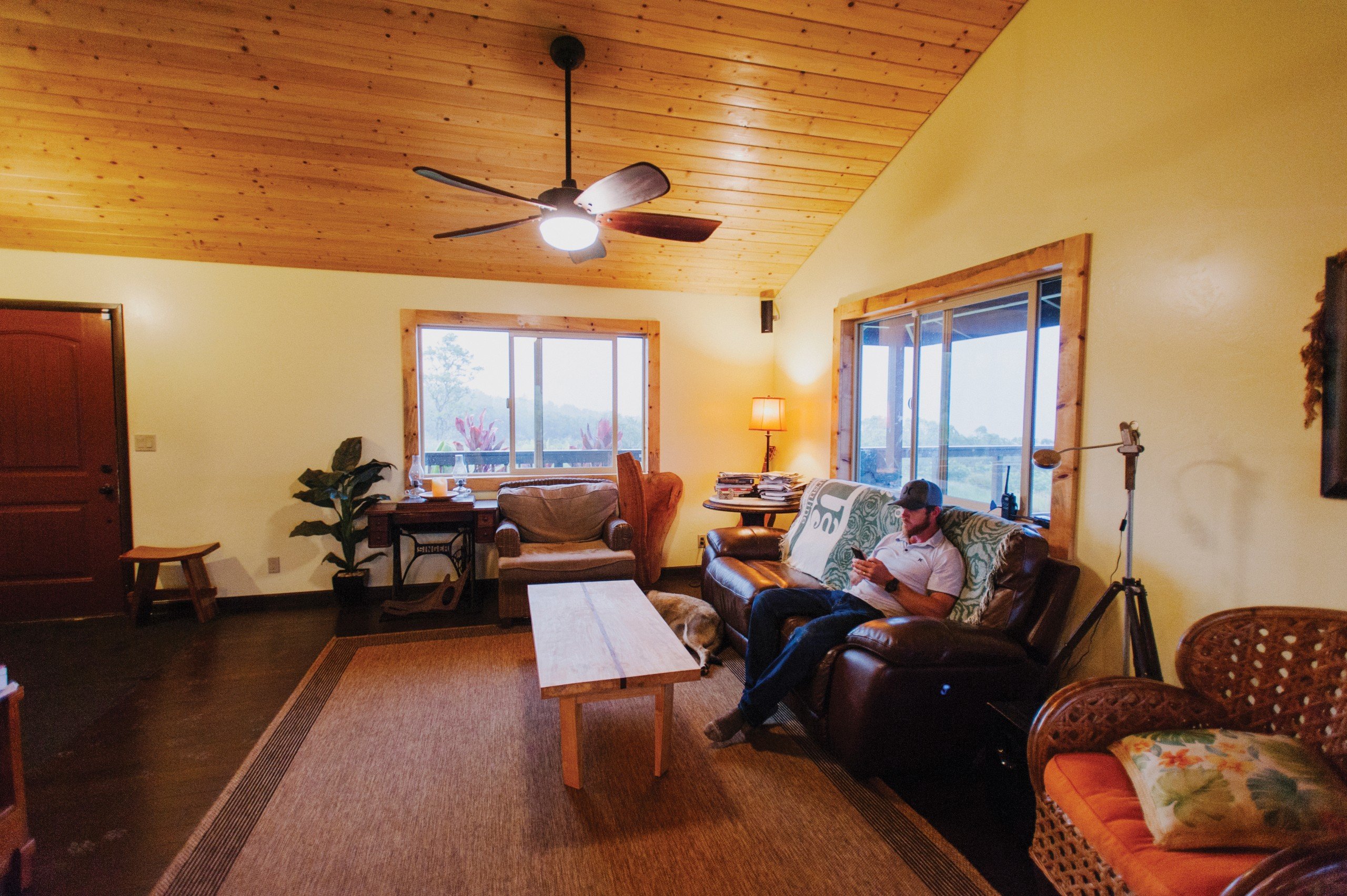
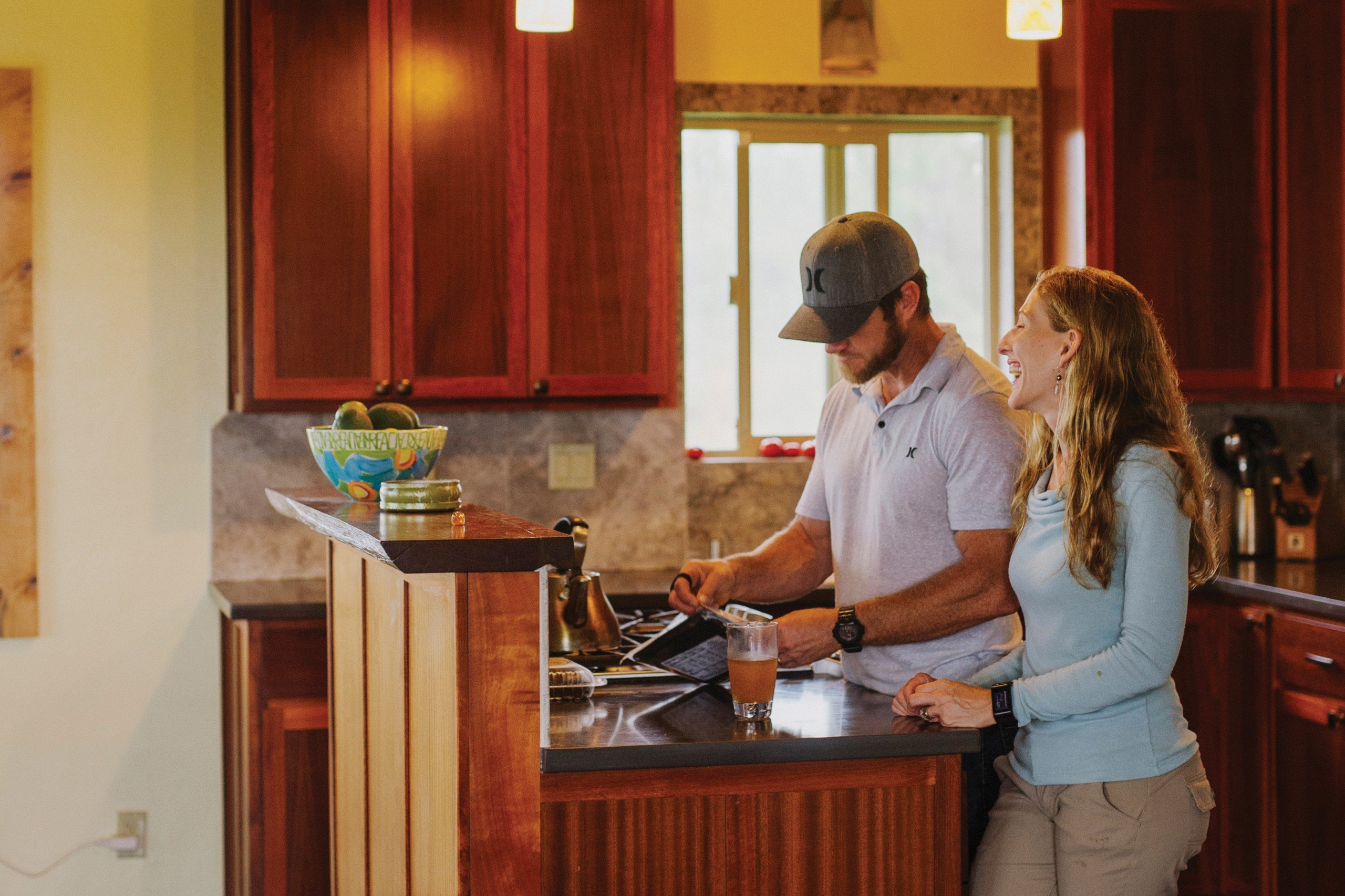
David and Jen love the independence of living off the grid, yet feel they had to make few compromises. Their solar power system with batteries lets them use all the conveniences of modern living, such as major appliances, though they do try to use the clothes dryer only when the sun is shining. One piece of advice David offers to potential off-gridders: Switch from AC to DC for electrical voltage, because DC is much more energy efficient when the electricity does not have to travel long distance.
The Systems Thinker
Blue Planet Foundation founder Henk Rogers wants to change everything about how Hawaii’s residents power their everyday activities.
“Hawaii imports $5 billion worth of oil every year. That $5 billion is a tax that gets added to everything. It’s the reason that rent is high, wages are low and why we have so many homeless. That’s $5 billion being sucked out of the economy for which we get nothing. Of that, 30 percent is going to jet fuel, 30 percent to ground transportation and 40 percent to make electricity.”
If Rogers has his way, the state’s imports of fuel for electricity and ground transportation will become a thing of the past.
His Puu Waawaa Ranch on Hawaii Island is an energy lab dedicated to exploring how to make that future happen. Like his home on Oahu, it is entirely off grid.
A tour of his ranch begins with a glass of water from 2,400 feet underground. Next, he shows me the lab, which has 360 solar panels on the roof, capable of making enough energy to power 17 average homes.
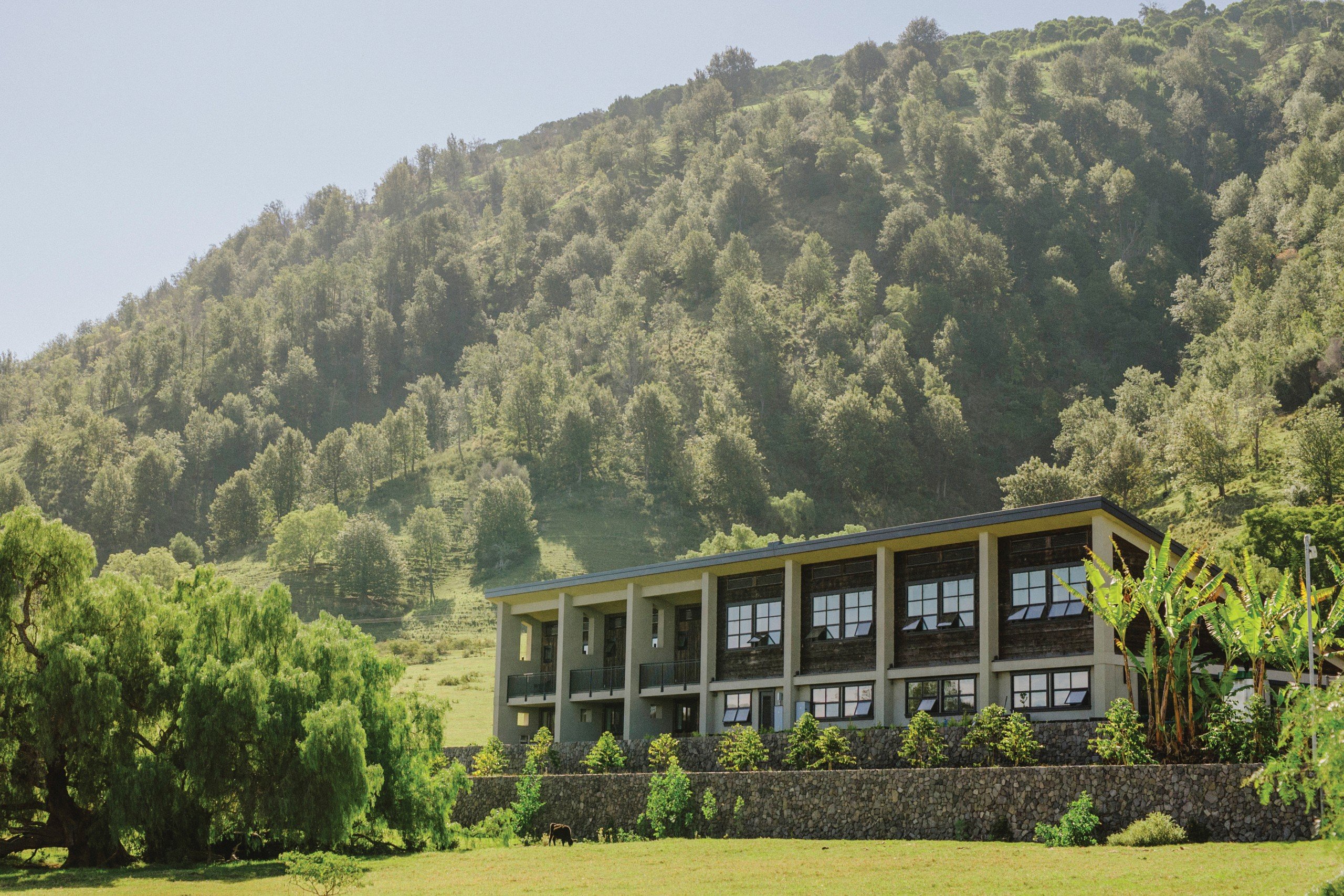
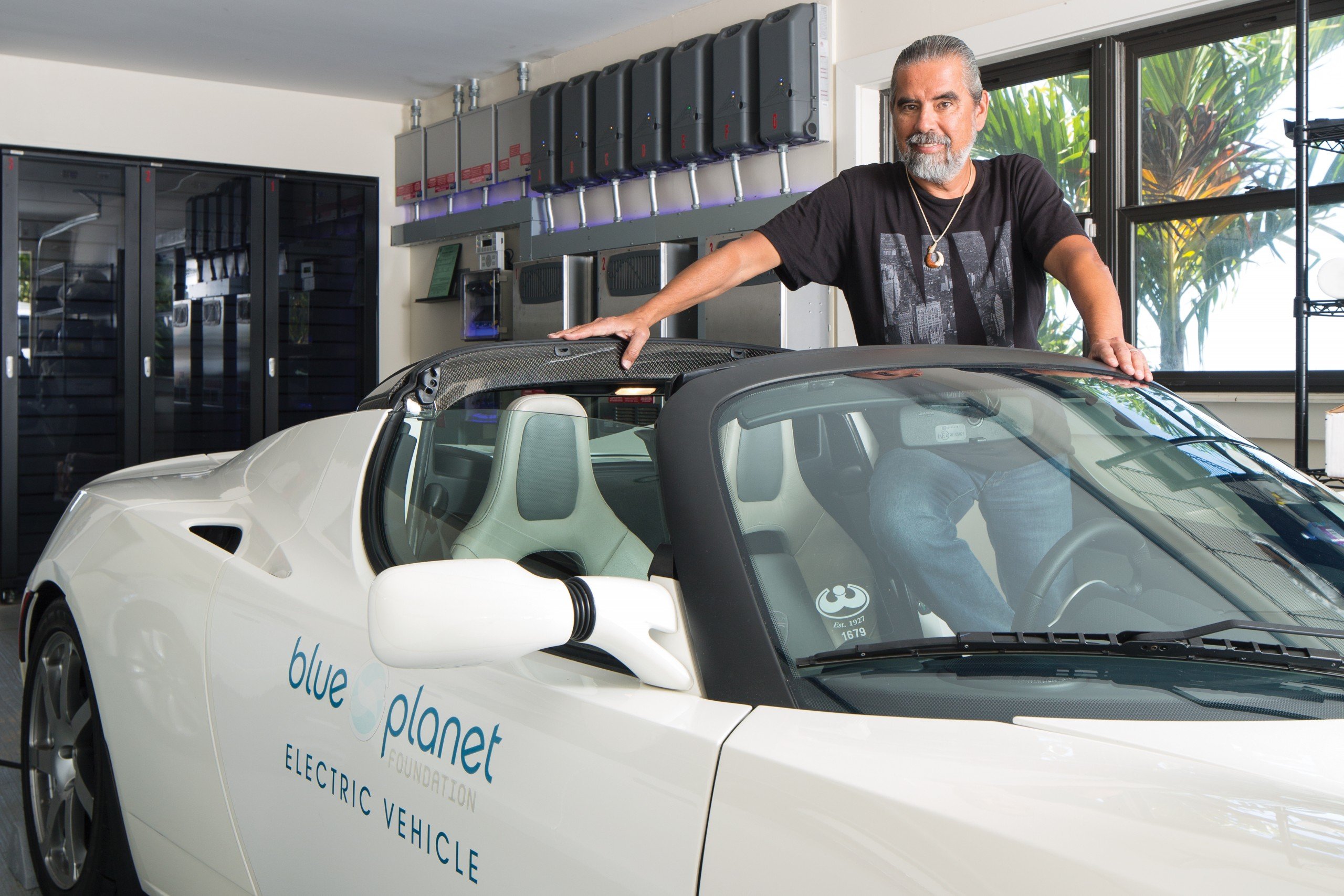
For Henk Rogers, going off the grid is a way to help reduce Hawaii’s dependence on oil for producing energy. Both his Honolulu home and his ranch on Hawaii Island, shown at top, are off the electric grid. Rogers says he loves his all-electric Tesla, but considers electric cars a stepping stone to hydrogen-powered vehicles.
Most off-gridders, he explains, use lead acid batteries. Besides containing harmful chemicals, they don’t last long. If they get drained to zero more than once, they have difficulty holding a charge. So in practice, off-gridders know they can only drain them down to about 50 percent, he says.
Rogers says the Sony batteries he uses can be drained down to zero and continue to last for at least 20 years. While their costs are currently out of reach for many average off-gridders, Rogers is exploring additional benefits that will increase the value of energy storage.
“By 10 a.m. on the ranch, our batteries are full. And then what happens to all that extra energy?” he asks. “The same thing happens on the grid. At some point the grid will take in enough from sun and wind, and then the rest is thrown away. So we who spend $5 billion a year on oil are throwing away energy. Instead of saving that energy and using it for something, we’re importing more oil and throwing away that money.
“It’s insane. It’s a crime,” he adds.
To rectify that waste, Rogers uses the excess electricity from the solar panels to produce hydrogen. That hydrogen, in turn, can then be used to fuel cars, trucks and buses.
So although he says he loves his Tesla (and is on friendly terms with Elon Musk), Rogers believes hydrogen cars, not electric ones, offer the greatest benefits for the future.
While electric cars are environmentally friendly because of zero emissions, the power plants that generate the electricity for their batteries may not be clean if they are based on coal or oil, rather than sun or wind. Plus, hydrogen cars can be refueled in minutes, versus the hours needed to recharge electric cars.
Furthermore, Rogers explains, when you make hydrogen, you also make oxygen. That extra oxygen doesn’t have to be wasted. It can, for example, be added to the water of aquaponics systems, increasing the number or size of tilapia grown.
When will all of this happen? Rogers stresses that hydrogen vehicles are still in their early stages, and the lack of fueling stations creates a chicken-and-egg situation in terms of consumer demand. But if his vision comes to fruition, five fueling stations on Hawaii Island will one day power all buses and trucks.
Although Rogers is optimistic that Hawaii can cut down on the $5 billion in oil it imports every year, he warns that the most innovative companies may soon be servicing other markets. China, eager to clean up their polluted air, is gobbling up the best green clean energy technologies.
“While they are buying up our companies, our leaders are saying we should go back to coal. When’s
the last time we were great? Right now. We’ve never been greater than right now. But we’ve got to go forward, not backward.”
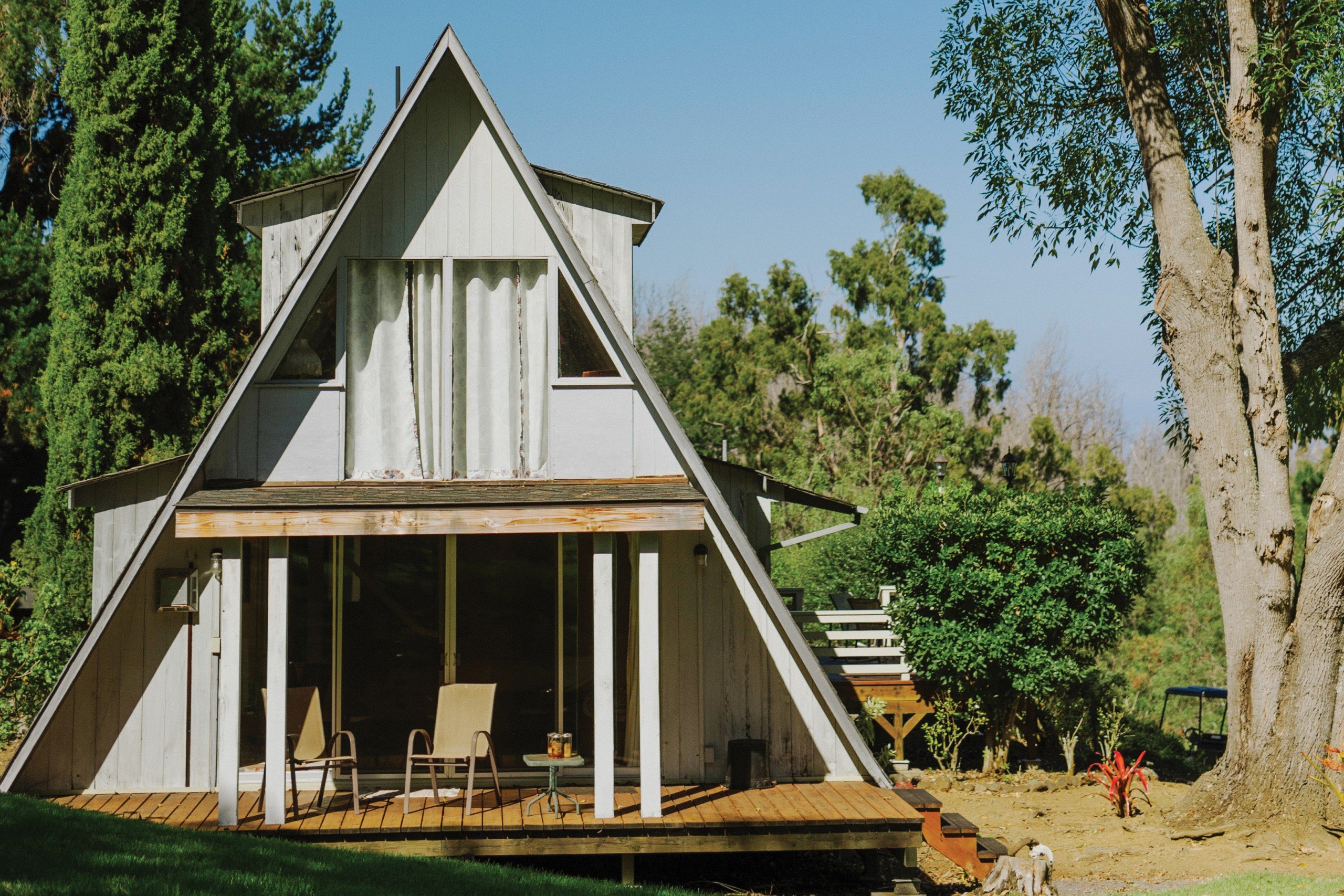
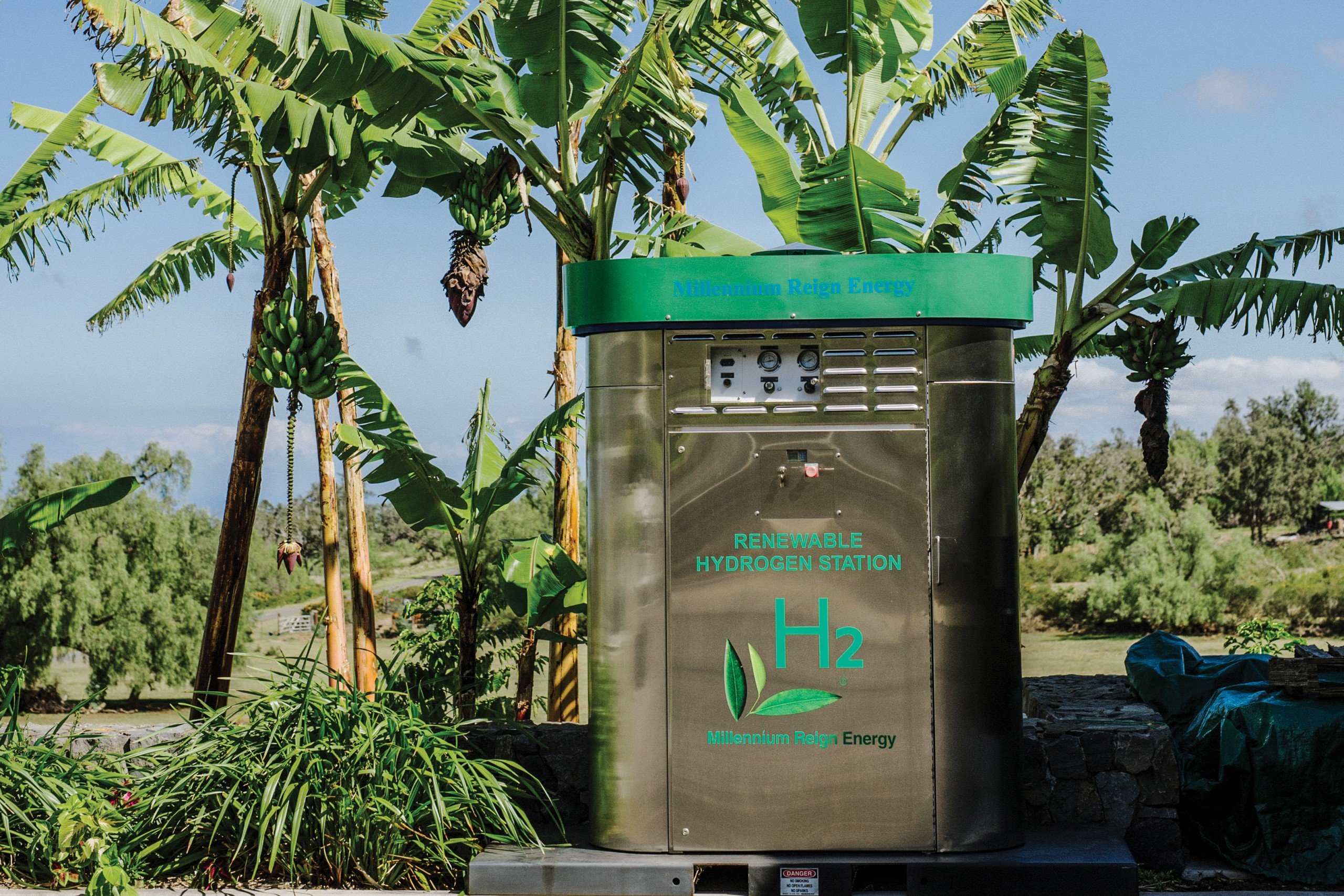
Henk Rogers’ Puu Waawaa Ranch on Hawaii Island is both an off-the-grid home and an energy lab. Above is a cottage on the property and a hydrogen refueling station for vehicles at the ranch.
Who Can Live Off Grid
Hawaii Life real estate agent Mike Despard has seen a steady increase in people inquiring about off-grid properties. But he also sees that many people, attracted either to the low prices or self-sufficiency, do not understand all of the trade offs.
“A lot of off-the-grid homes are far from major amenities such as schools and shopping. People romanticize it. But it’s like fantasizing about buying a coffee farm. It sounds amazing but running one is more work than they realize,” says Despard.
People romanticize it. But it’s like fantasizing about buying a coffee farm. It sounds amazing but running one is more work than they realize,” says Despard.
Fishman, the podcast host and author who teaches people how to unplug, stresses the importance of being prepared. He says people need anywhere from $20,000 to $50,000 to install solar and catchment systems. And there’s more: “To be truly off grid, you’ve got to farm or work a garden, and run an aquaponics system. You’ve got to research the land. Does it rain often? Is it sunny? Does it have a downhill water supply? Is the soil fertile? You have to think about home security because you may be remote. And you have to be prepared to fix things yourself because help might not come for a long time.”
As for whether an off-grid lifestyle is suitable for someone coming from an urban or suburban background, he offers a simple litmus test. “Ask yourself: Do you like camping on the weekends? If not, you’re not going to like living off the grid.
“And if you have a girlfriend who doesn’t like to camp or go fishing, it’s just not going to happen.”
Those who work in the field of energy solutions also caution prospective off-gridders to take into account the potentially adverse impact it may have on others. “There are a lot of calculations and studies that show that when more people leave the grid, rates increase for the rest of the people who stay,” says Chris DeBone, managing partner at Hawaii Energy Connection, maker of KumuKit.
“Then what happens to the auntie living in an apartment who can’t afford to generate her own solar?” he asks.
Jill Sims, chief operating officer at Elemental Excelerator, agrees that the conversation about off gridding should include a consideration of the greater social good. “A small number of people can afford solar and storage. But when they are no longer connected to these utilities, there are cost implications for the people who can’t afford those solutions. The question is, how can we create solutions that are socially equitable and well deployed across our infrastructure?”
For those who have already successfully unplugged, there may be no going back. While saving money on utilities is important, the freedom to create a lifestyle on one’s own terms is what motivates many people to stay off grid. And that lifestyle doesn’t have to follow a specific formula. It can be roughing it or luxurious. It can require discipline or it can feel just like living on the grid. It can support community or an isolated existence.
Off-gridder Galen says disconnecting actually makes him feel more connected to himself, others and the land. “I’ve spent more of my life living in a tent in the wilderness than any other place. I don’t desire walls or creature comforts. Or rather, I don’t desire those un-creature comforts.
“Being always plugged in doesn’t make life easier. It makes life duller. When we have endless power, it’s funny what we find ourselves doing. When we don’t have it, we can be more intentional about everything we do.”
